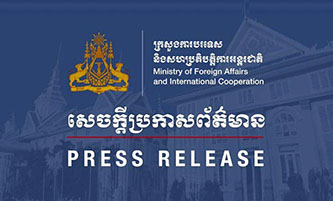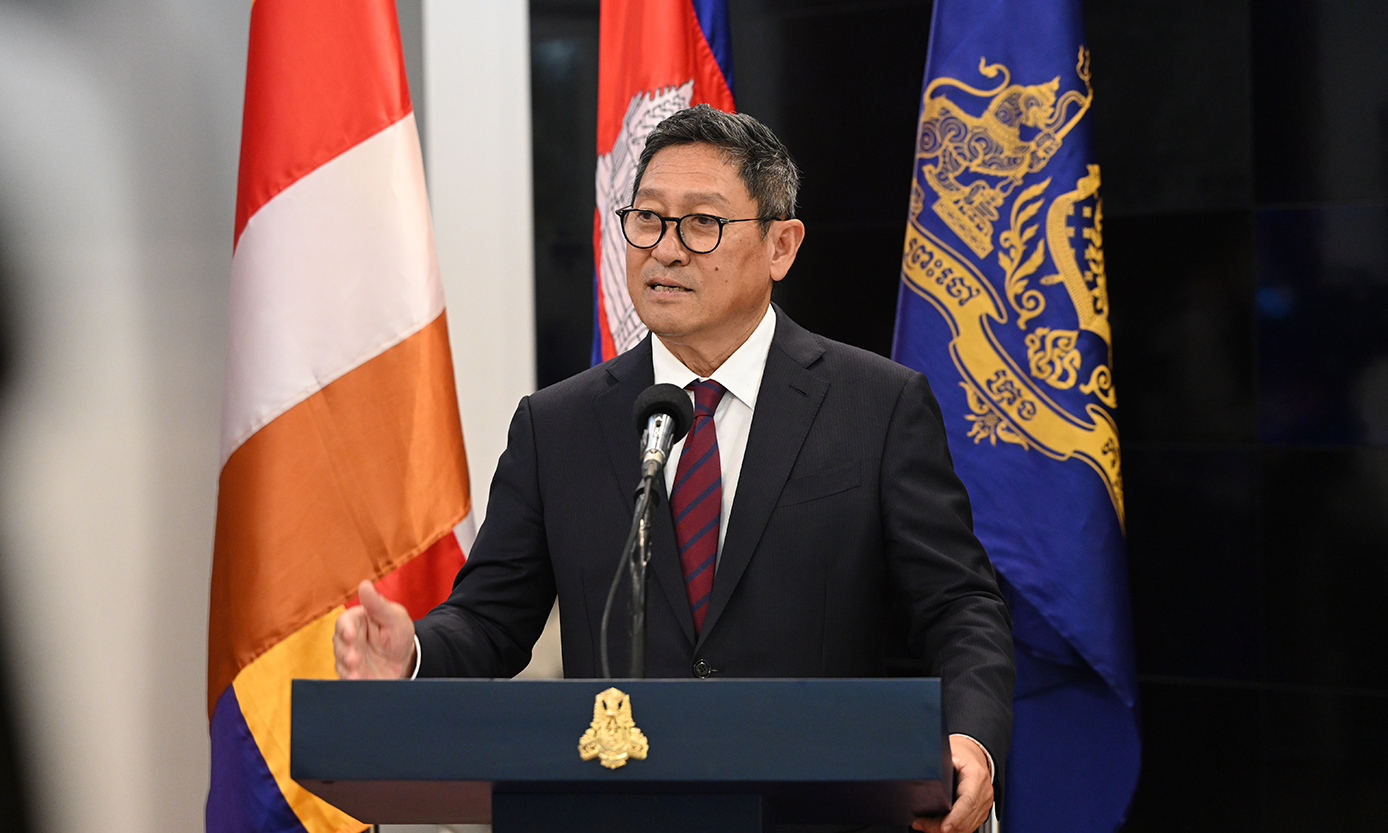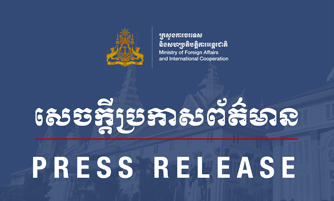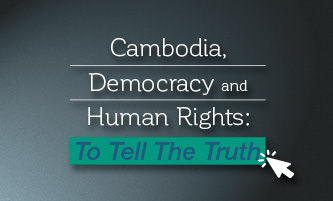Information
Information
The Ministry
Press Release
-
Cambodia and the Commonwealth of Dominica to Deepen Bilateral Relations
-
Clarification by the Ministry of Foreign Affairs and International Cooperation on the Khmer Times Opinion Article Titled “Why Cambodia Must Never Forget”
-
Cambodia, Japan Sign Exchange of Notes on Japanese Yen Loan for Two Projects
The Ministry

Press Release
> Cambodia and the Commonwealth of Dominica to Deepen Bilateral Relations
> Clarification by the Ministry of Foreign Affairs and International Cooperation on the Khmer Times Opinion Article Titled “Why Cambodia Must Never Forget”
> Cambodia, Japan Sign Exchange of Notes on Japanese Yen Loan for Two Projects
Embassy News
Media & Culture
ឯកឧត្តម ឧបនាយករដ្ឋមន្ត្រី ប្រាក់ សុខុន លើកទឹកចិត្តសិស្សនិទ្ទេសA នៃការប្រឡងសញ្ញាបត្រមធ្យមសិក្សាទុតិយភូមិ នៅទូទាំងស្រុកអង្គស្នួល ខេត្តកណ្តាល ចំនួន៣២នាក់ ម្នាក់ៗទទួលបានម៉ូតូ Honda Dream 2026 ចំនួន១គ្រឿង ។
More Videos

The Taste of Angkor” is the “Best Asian Cookbook” at the Gourmand World Cookbook Awards 2021.
The Taste of Angkor Cookbook was proudly presented at the Umeå Food Symposium in Sweden on 2-5 June 2022, and won two Gourmand World Cookbook Awards 2022.
Read more...
The official destination guide from the Ministry of Tourism
Cambodia, the Kingdom of Wonder
Read more...
Kbach Kun Khmer Boran
Kbach Kun Khmer Boran (Khmer martial arts) date back more than a thousand years, as evidenced by carvings and bas-reliefs in the Angkor temples. The martial arts include Bokator, Pradal Serey, Baok Chambab, Kbach Kun Dambong Vèng, amongst others. Bokator Bokator, known formally as Labokatao, is a Cambodian martial art form that involves close hand-to-hand combat, ground techniques and weapons. Bokator is one of the earliest Cambodian martial art and is said to be the close quarter combat system used by the armies during the Angkor era. Practitioners are trained to strike with knees, elbows, hands, feet and even the head. Short sticks are commonly used as weapon. Baok Chambab Baok Chambab is Khmer wrestling; a sport in which two opponents try to pin (hold) each other’s back to the ground. A match consists of three rounds. Wrestlers perform pre-match ritual dancing. A wrestler wins a match by two out of three rounds. However, after each round, the loser is asked if he still wishes to continue with the match. A Baok Chambab match is traditional accompanied by drum beats; two drums known as Skor Nhy and Chhmol, (female drum and male drum). Traditional matches are held at the Cambodian National Olympic Stadium during the Khmer New Year and other Cambodian holidays. Kbach Kun Dambong Vèng Kbach Kun Dambong Vèng literally refers to an ancient Cambodian martial art form involving the use of a long staff. It has traditionally been practiced to prepare against enemies bearing eventual malice towards their villages and their country. Now, it is particularly popular with youths in main sports clubs in Cambodia. Pradal Serey Pradal Serey is traditional Khmer kick boxing. A match consists of five rounds and takes place in a boxing ring. There is a one or two-minute break in between each round. Before a match, boxers perform the praying rituals known as the Kun Krou. Traditional Cambodian music is played during a match. The instruments used are the Skor Yaul (a drum), the Sralai (a flute-like instrument) and the stringed Chhing. Boxers are required to wear leather gloves and shorts. Victory is instantaneously granted when a boxer delivers a knockout which is determined when the knocked down boxer is unable to continue the fight after a 10-second count by the referee. Victory is also determined at the end of the match when judges decide by a point system which fighter was more effective. If the fighters end up with the same score, a draw is called.
Read more...Media & Culture
ឯកឧត្តម ឧបនាយករដ្ឋមន្ត្រី ប្រាក់ សុខុន លើកទឹកចិត្តសិស្សនិទ្ទេសA នៃការប្រឡងសញ្ញាបត្រមធ្យមសិក្សាទុតិយភូមិ នៅទូទាំងស្រុកអង្គស្នួល ខេត្តកណ្តាល ចំនួន៣២នាក់ ម្នាក់ៗទទួលបានម៉ូតូ Honda Dream 2026 ចំនួន១គ្រឿង ។
More Videos


























